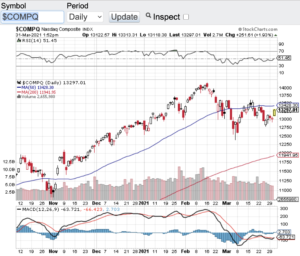If 2014 comes anywhere near the performance the overall markets experienced last year, once again the bulls will be popping champagne. For the year 2013, the Dow Jones Industrial Average (chart) closed up a breathtaking 26.5%, the Nasdaq (chart) finished the year up a staggering 38%, the S&P 500 (chart) booked a spectacular gain of almost 30% and the small-cap Russell 2000 (chart) soared 37%. I think it’s safe to say that an exact repeat of 2013’s performance is highly unlikely, but there is seemingly no reason to believe that this momentum won’t continue into the new year. Even the key indices in Europe had very impressive double digit gains in 2013 with the German DAX index leading the way surging 26% on the year.
With that said, the first thing that pops out to me is that the aforementioned key indices are all now near or completely in overbought territory according to the Relative Strength Index (RSI) technical indicator. We have been monitoring these indexes since October of 2013 to see when they may go into extreme overbought conditions and with the powerful year end close, we now have 3 of the 4 key indexes officially in overbought territory with the Russell 2000 (chart) only a few value points to go. So what does this all mean for the investor or even more so, to the trader? By now all of you know that I personally view the RSI as a reliable technical indicator distinguishing whether an index or stock for that matter is overbought or oversold. In fact, certain computer algorithmic trading models are designed to act whenever extreme conditions occur in a given market or stock. Let’s recap the definition of the Relative Strength Index or the RSI. In the most simplest terms, the RSI is designed to demonstrate whether or not an index or equity is overbought or oversold, depending on certain value levels. According to the RSI principle, the 70 value level or greater, is an overbought condition and the 30 value and below is an oversold condition. And as mentioned the majority of the key indices along with dozens of stocks are now in overbought territory. This doesn’t mean that we will all of a sudden see a dramatic turn in the opposite direction, however, typically when stocks or indexes are in overbought or oversold conditions such as they are now, at some point in time, a change of direction ensues.
The wild card that will most certainly continue to play out is of course the Federal Reserve and what course of action they will take and uphold in 2014. Especially now that the Fed has started to reduce its asset purchases. We all know that the accommodative policies of the Fed over the past few years has placed a floor under these markets and whenever any attempt of a pullback or mini-correction has occurred, that condition has been met with unprecedented support, hence new market highs followed. I would expect as long as the Fed continues to support the bond and mortgage backed securities markets, even at a reduced rate, whatever pullbacks or retracements that do occur, buyers will be anxiously awaiting to add to their positions or open new ones.
I do expect a healthy 5%, 10% or even 15% correction in 2014 and if you have the gumption to go short, this could serve you well. Of course no one knows if or when this correction may take place, however, as highlighted, we are now in overbought territory which could be one of the catalysts to prompt a pullback or even a subtle correction. Should we get this healthy correction, we will be looking into the financial and technology sectors to identify opportunities to capitalize on. Please note this is not a recommendation to go short or long any asset or index, and it is prudent to consult with a certified financial planner(s) before making any investment decisions.
Good luck to all and both Paula and I wish everyone a very safe, prosperous and Happy New Year 🙂
~George
